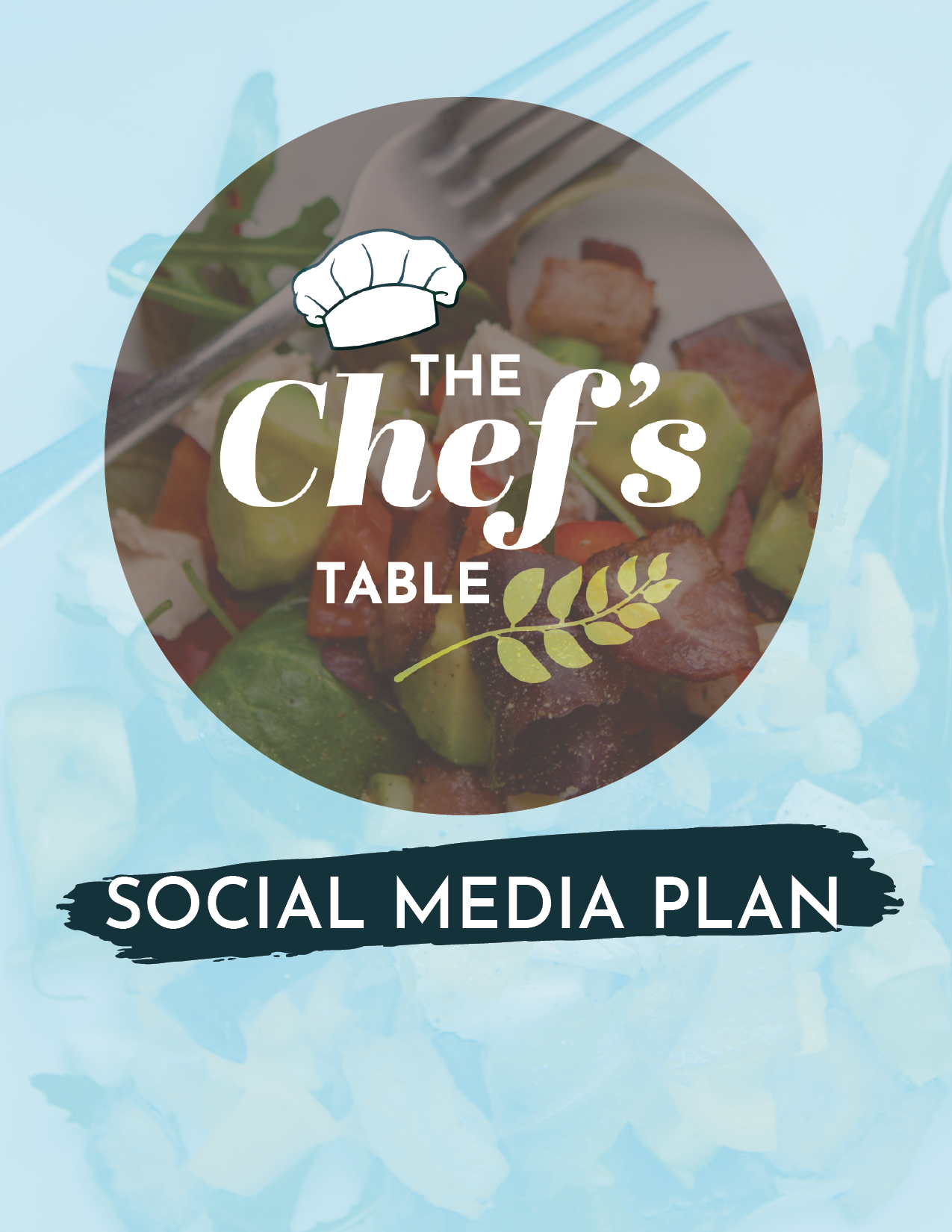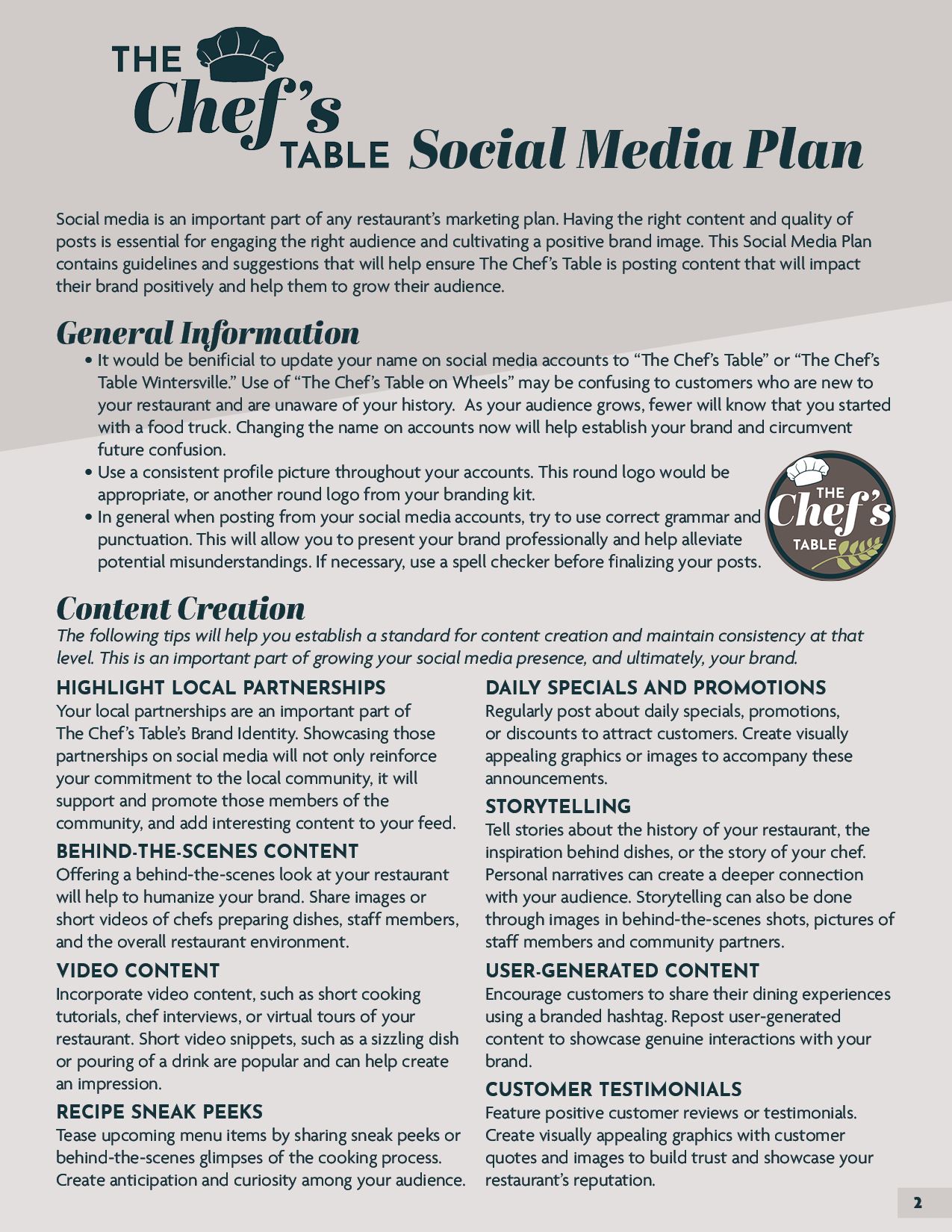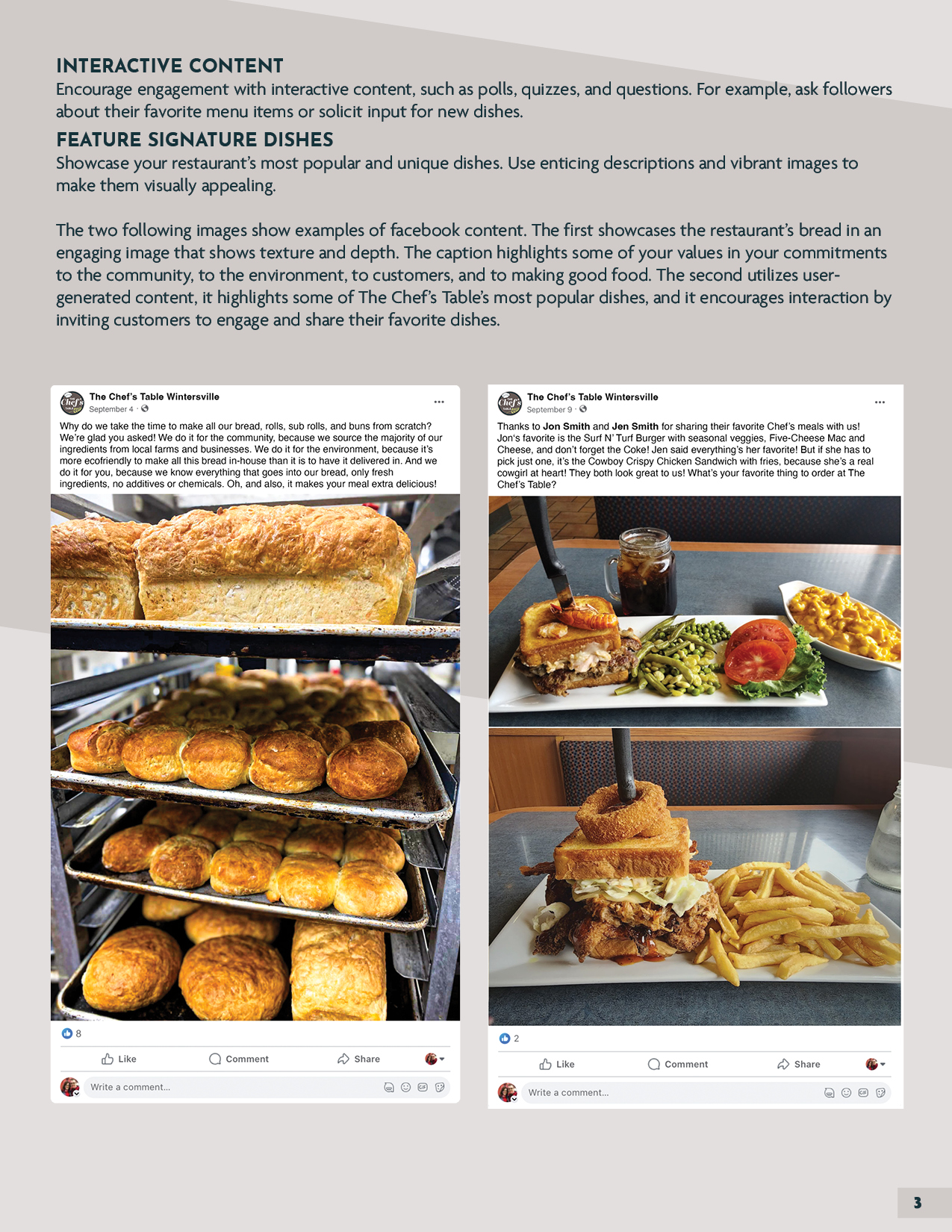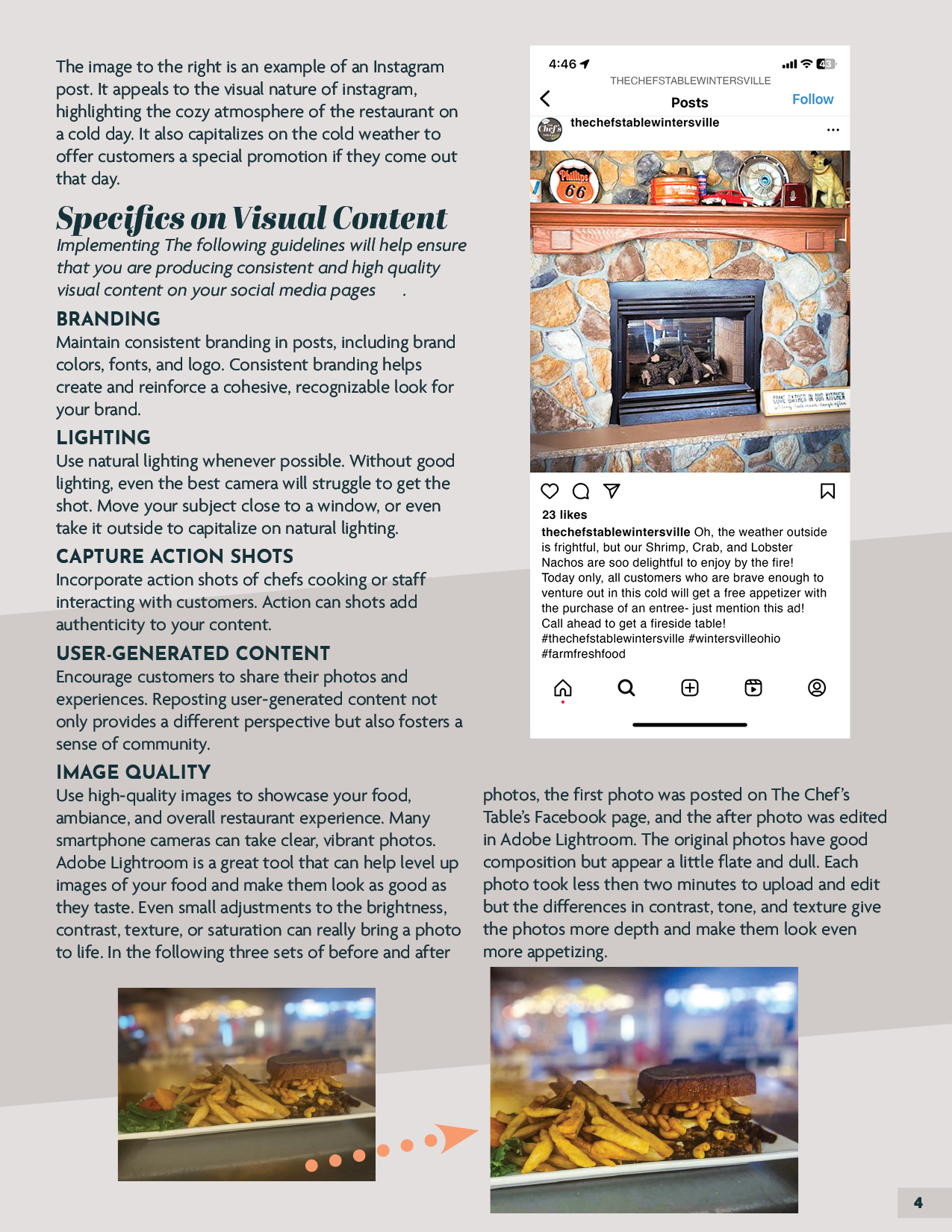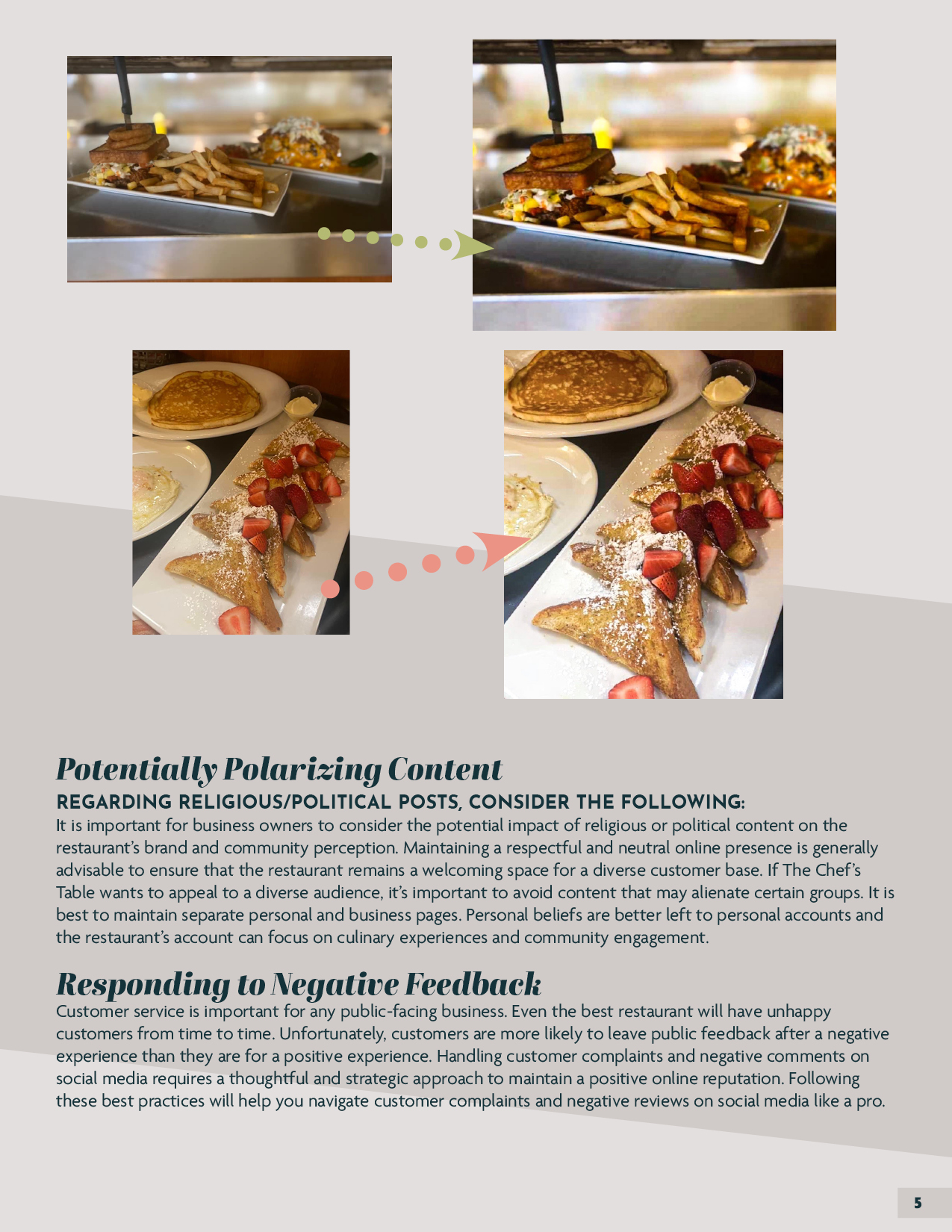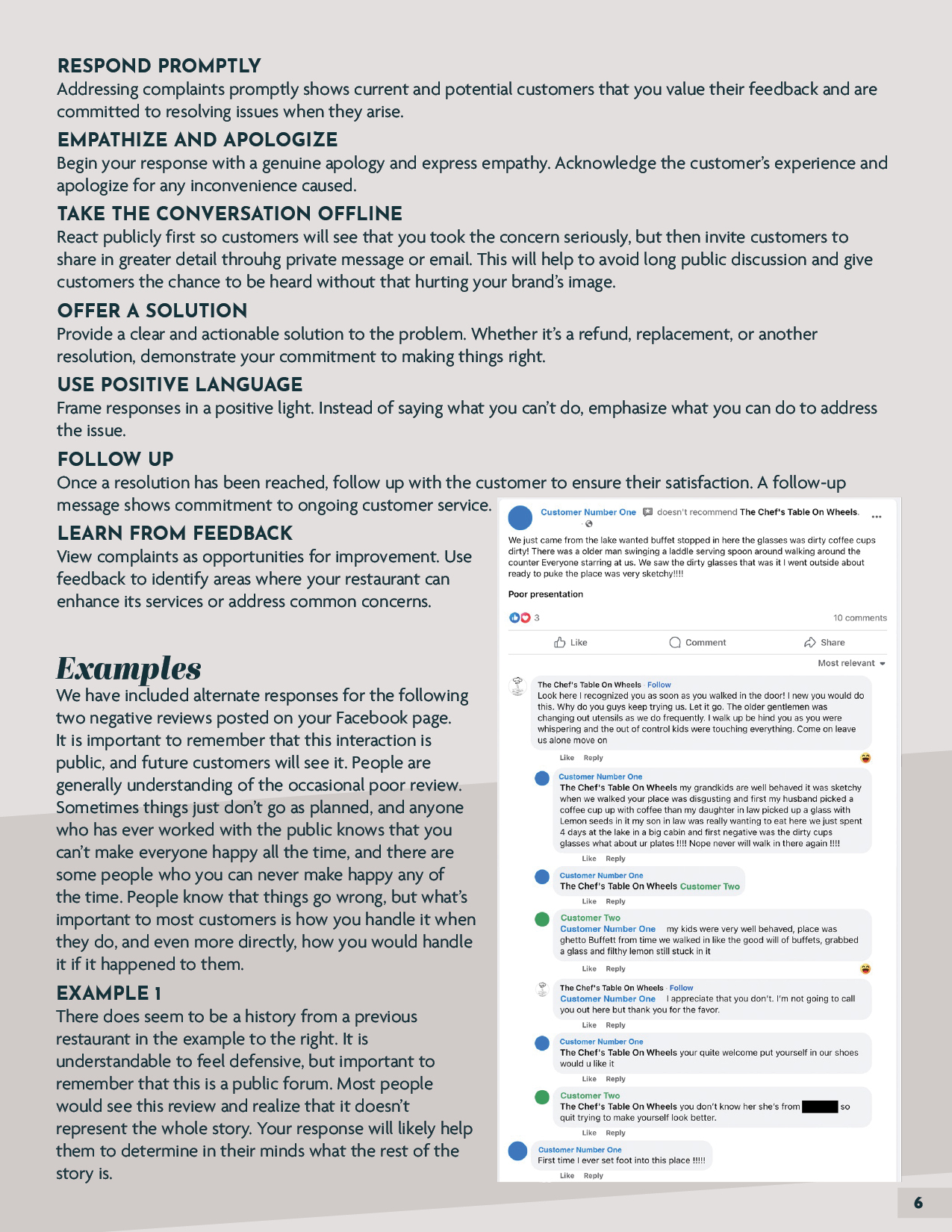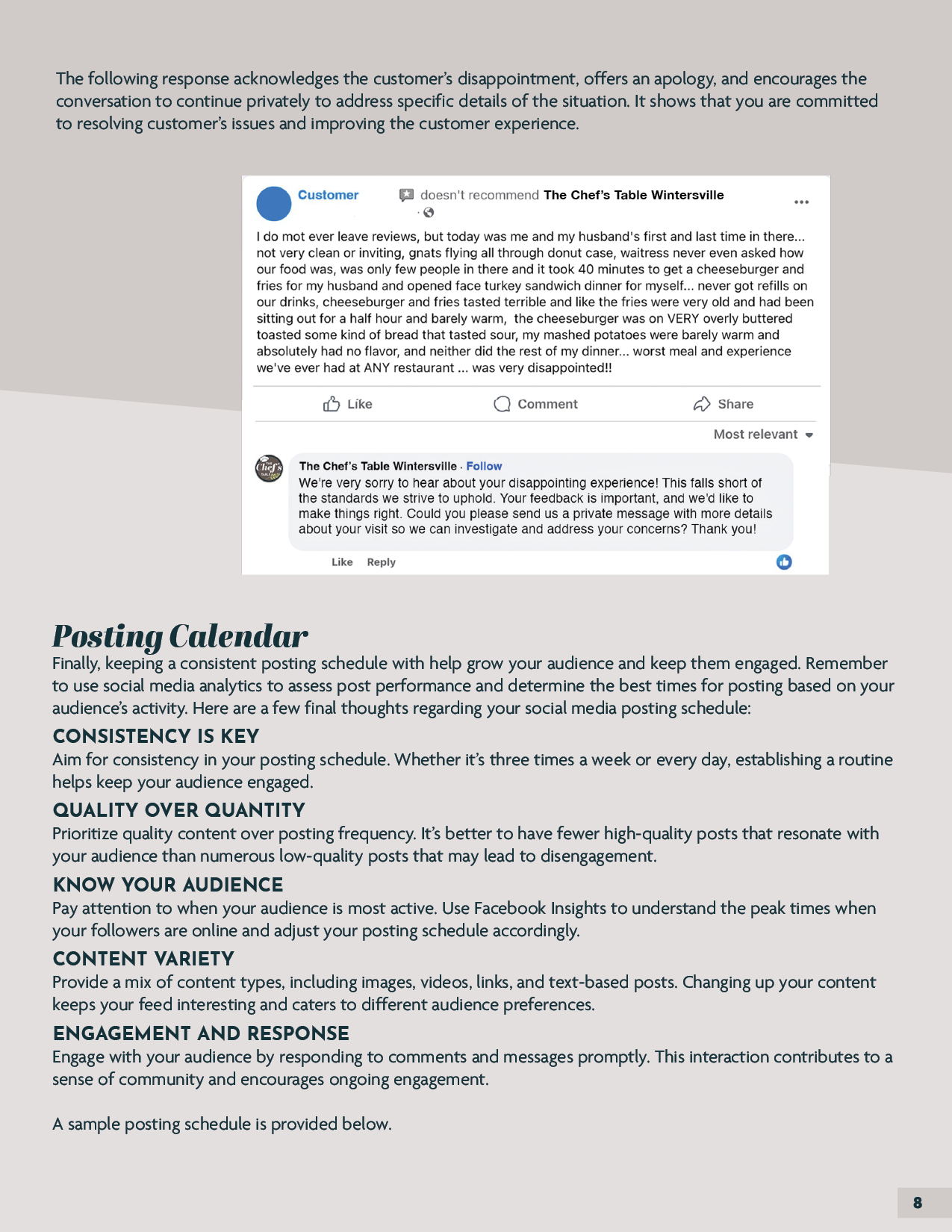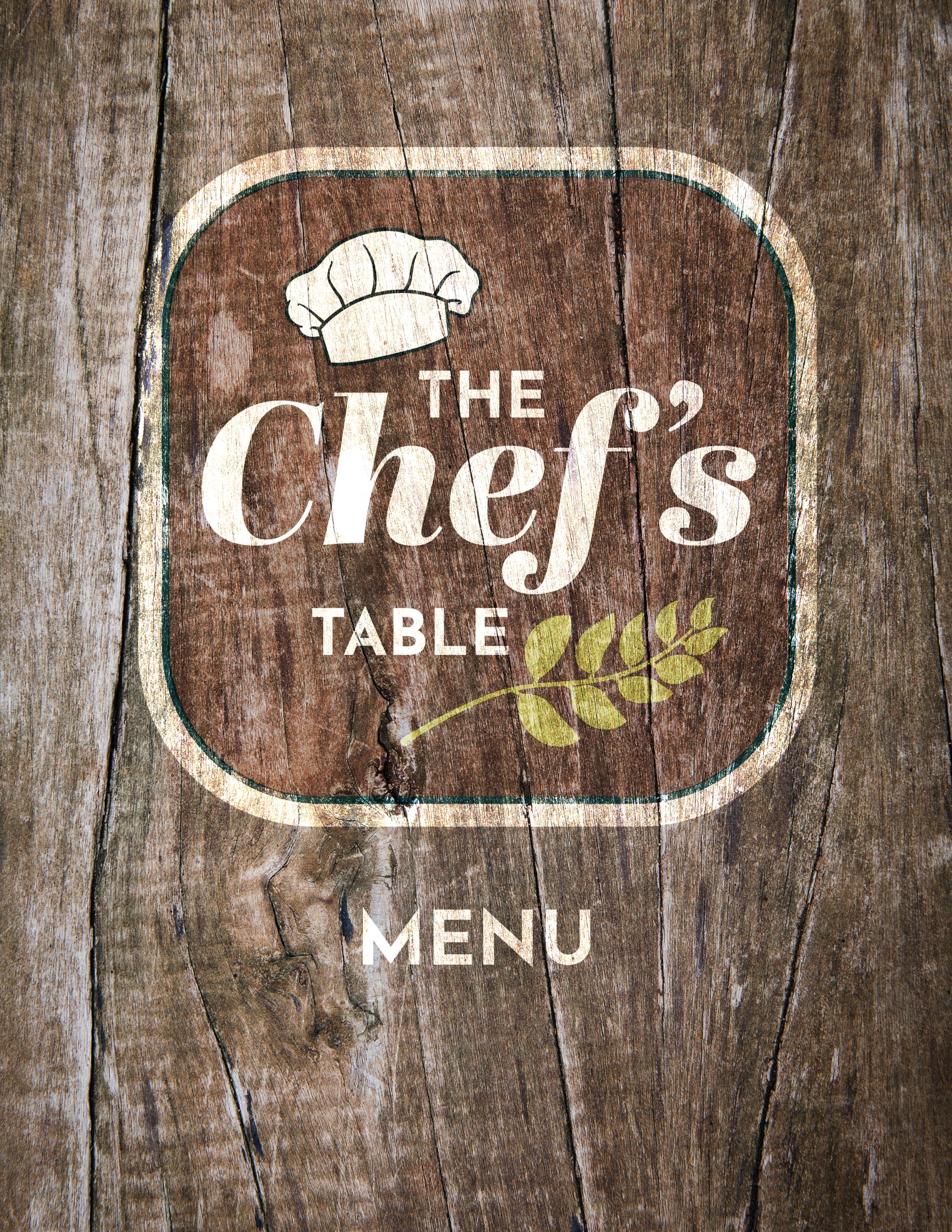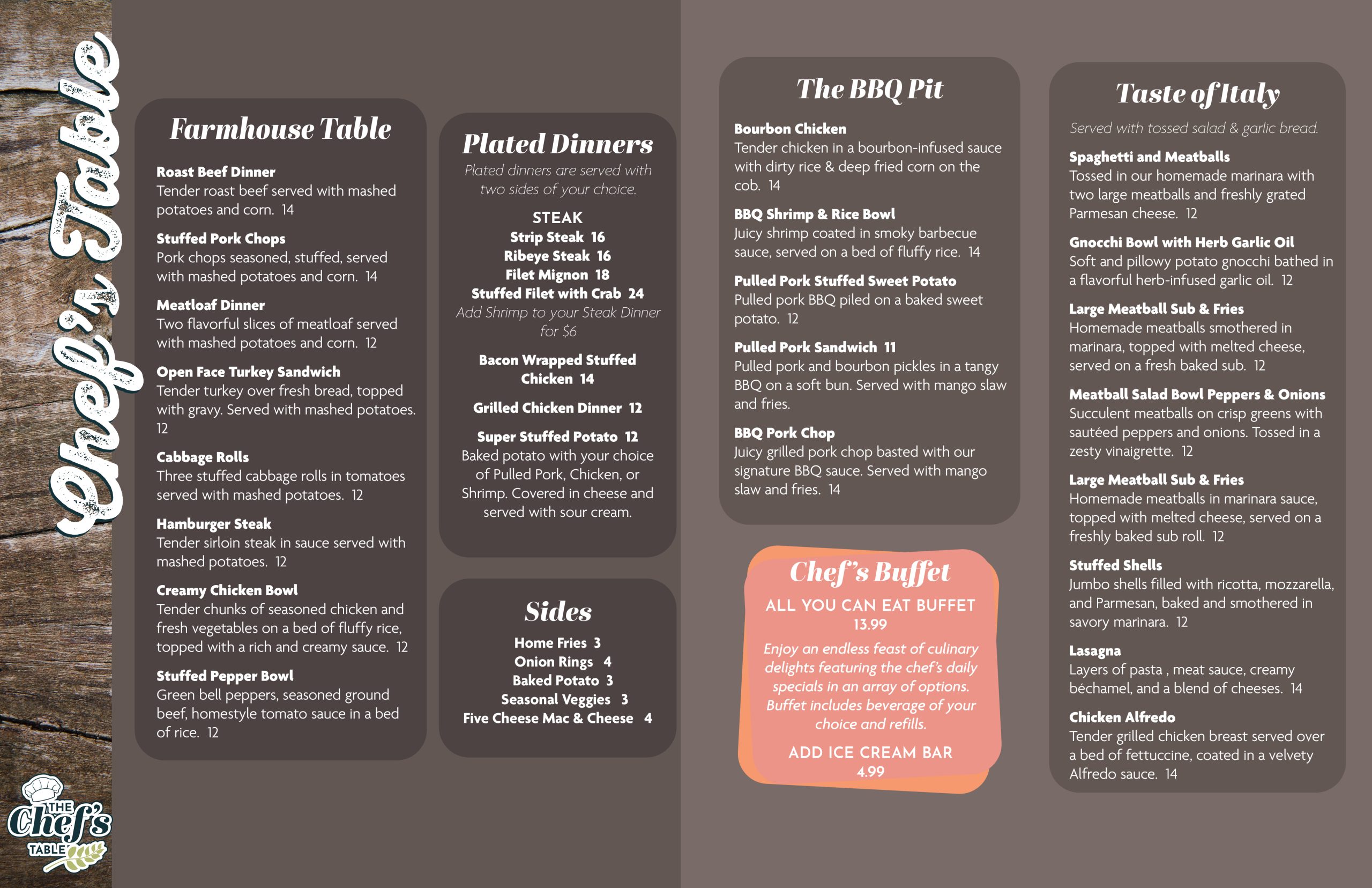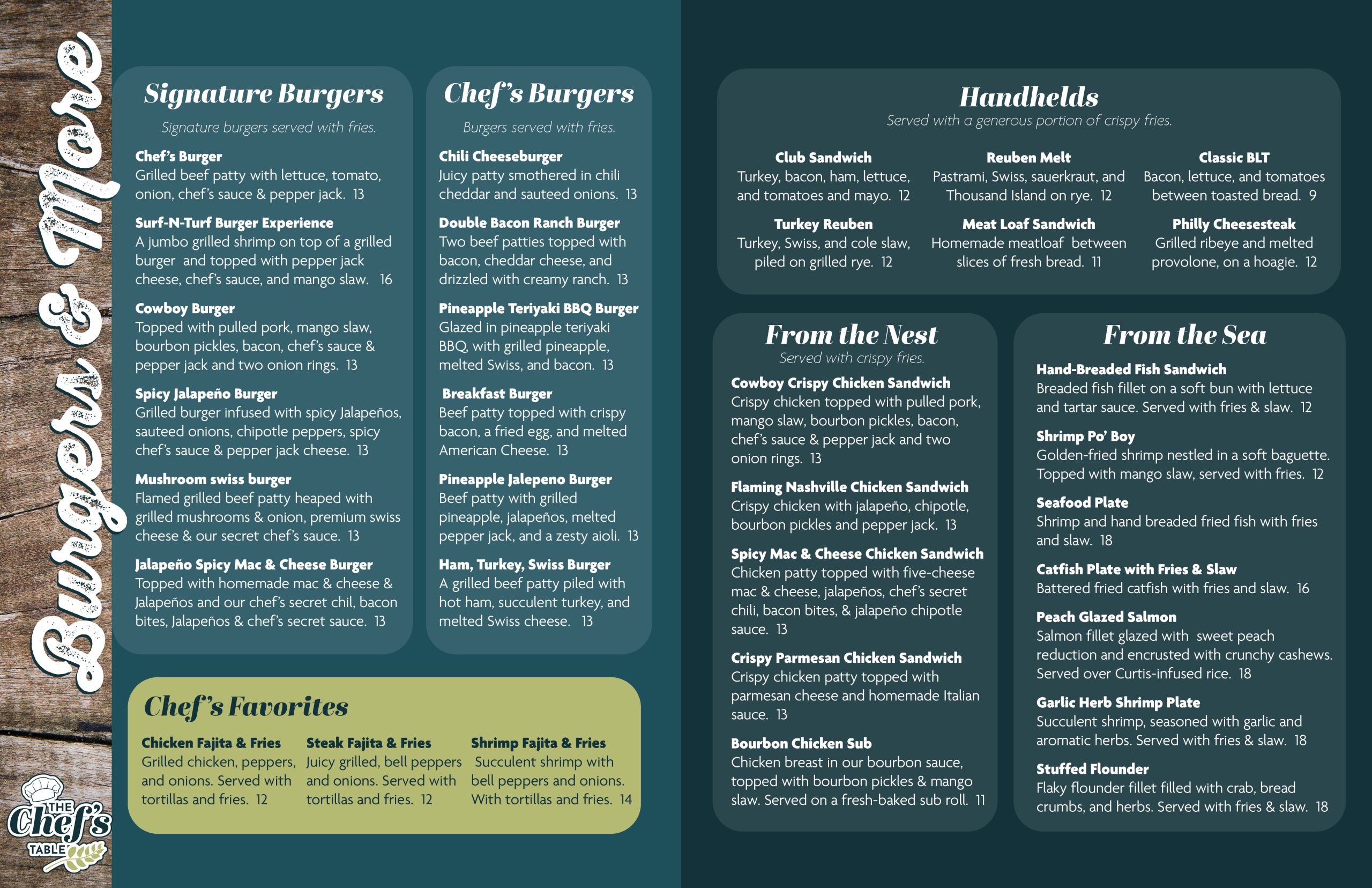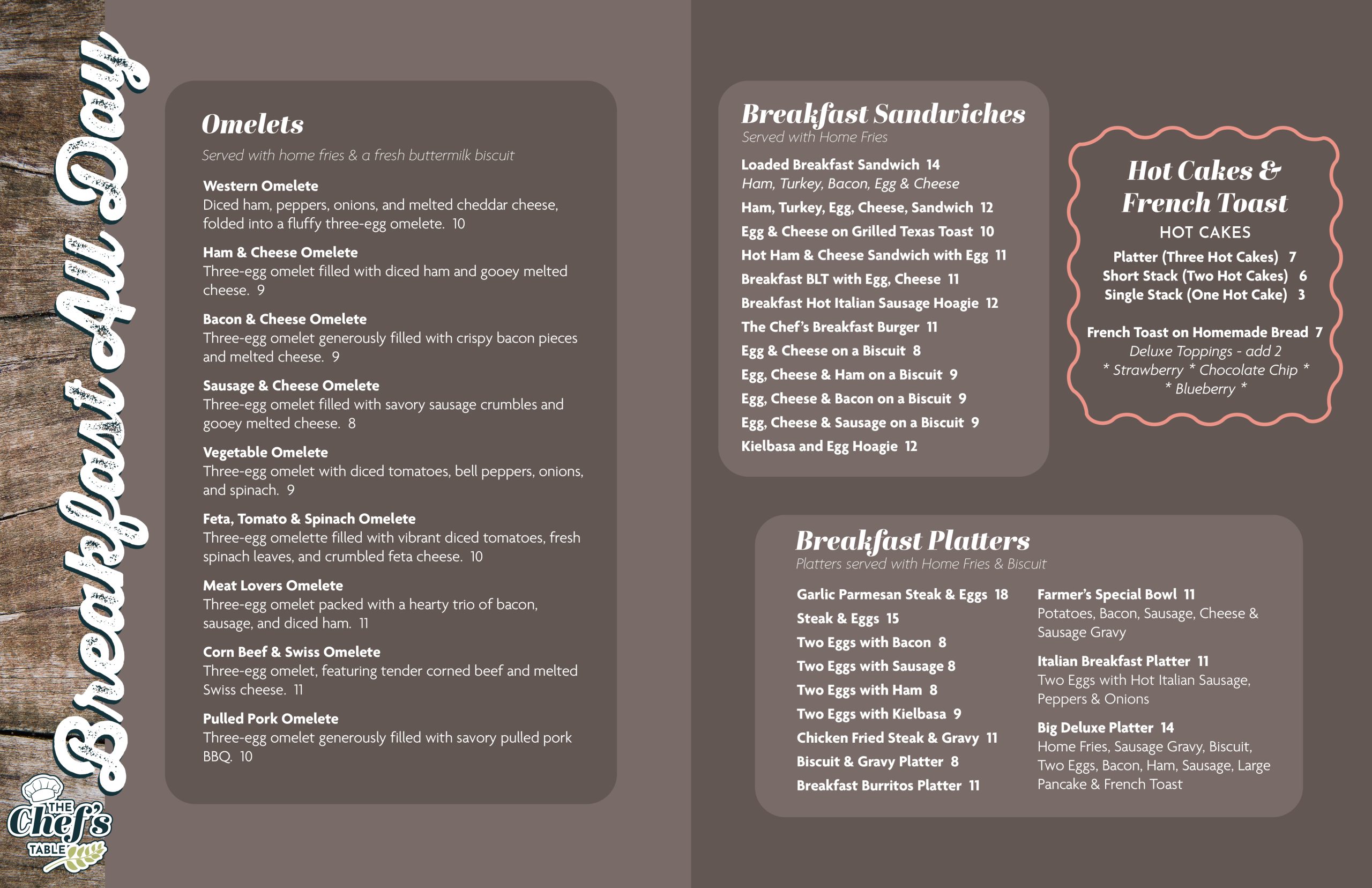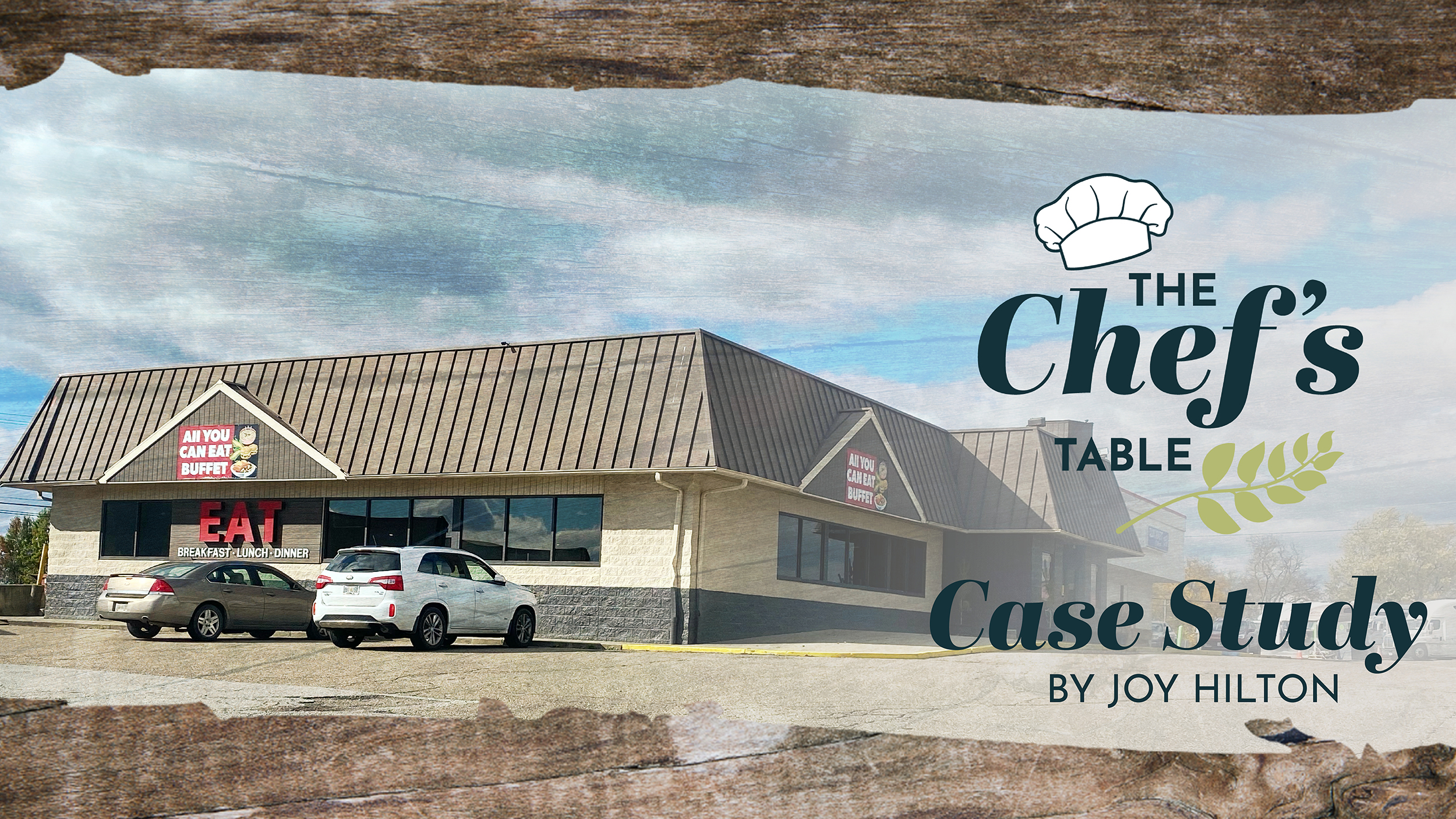Case Study
The Chef’s Table // Logo & Brand Identity
The Chef’s Table opened in June of 2023 in Wintersville, OH, following the owner’s journey from a food truck in Belmont County (“Farm to Chef Table”) to co-ownership of “Sonny Boy” Restaurant of Bridgeport, OH. Eventually a second location of Sonny Boy was opened by the partners in Wintersville, OH, but just two months later, on June 16, 2023, the newer owner who started with a food truck, acquired sole ownership of the Wintersville location, rebranding it as “The Chef’s Table.” Emphasizing fresh, locally sourced ingredients, The Chef’s Table offers a daily all-you-can-eat buffet and an extensive menu featuring home-cooked dishes. The restaurant reflects a commitment to quality and a journey rooted in farm-to-table origins.
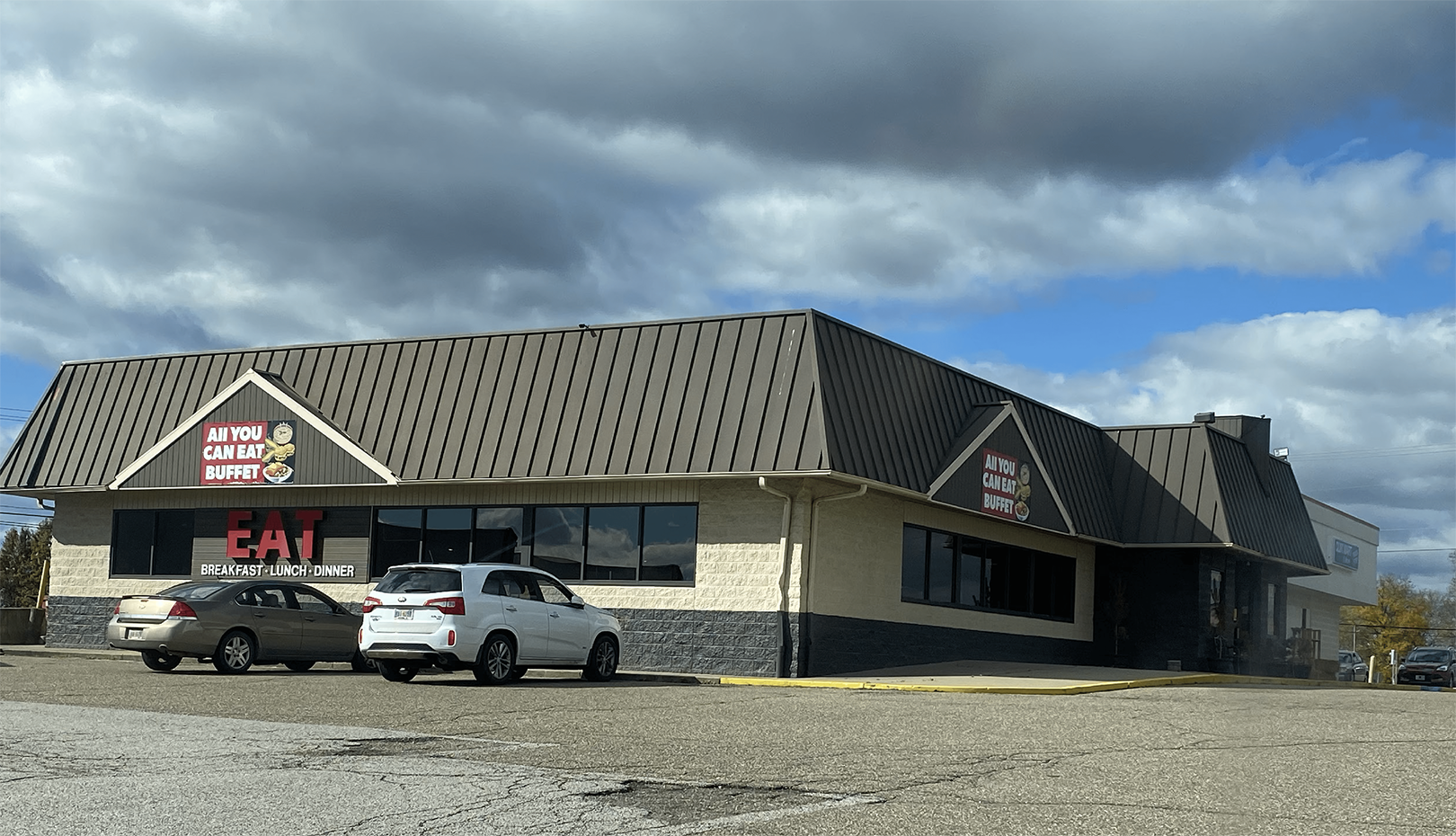
Problems
The Chef’s Table is experiencing an identity crisis. They have many strengths that are being undersold by the absence of their public identity. Their visual identity lacks any clear direction. The name on their social media accounts is still “The Chef’s Table on Wheels,” and the tone these accounts portray through posts is confusing. The journey from food truck to one restaurant and then to another over a few years is impressive and was likely a fast-paced adventure. It seems the vision for who they are may have been lost along the way, causing a breakdown in the following areas:
1. Visual Identity
2. Social Media
3. Menu
Problem 1: Visual Identity
The Chef’s Table lacks a strong visual identity. Several different version of the logo are in use in different places. There is no color scheme and no consistent typography. The road sign outside of the restaurant is this black graphic on a white vinyl banner. This is the only sign on the property that says the restaurant’s name. There is no sign on building that says “The Chef’s Table.”
The lack of a solid brand weakens overall brand perception and makes building customer loyalty more challenging and would make any future advertising less effective and prevent them from establishing a more substantial presence in the community and online.
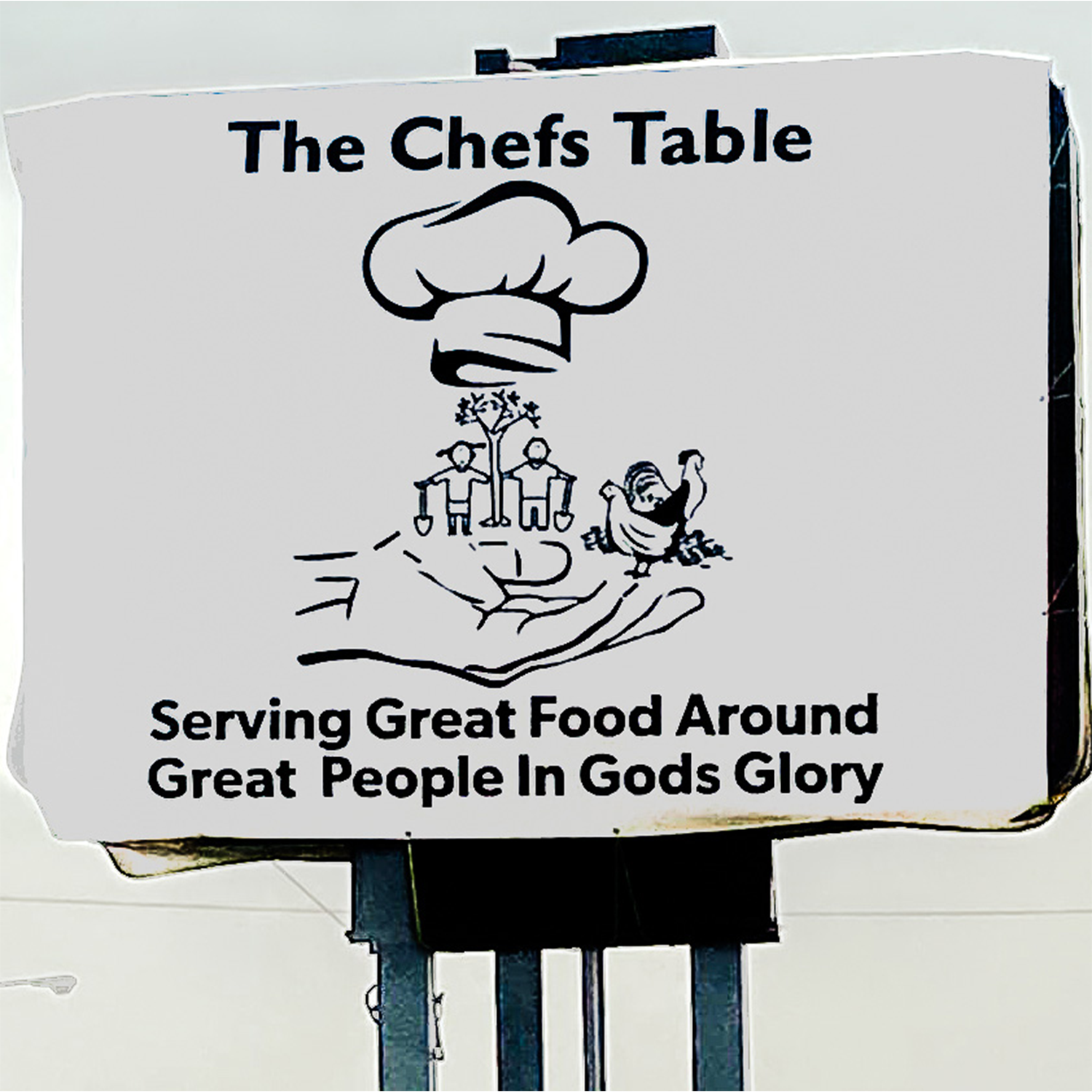
Solution 1: Develop a Brand Identity
Develop a visual brand identity and include a new logo, brand color palette, and typography.
A strong visual identity and a professional, polished look will increase local business and attract new customers from an expanded service area. This will lead to legitimizing The Chef’s Table as a higher-caliber restaurant with a strong presence in the community.
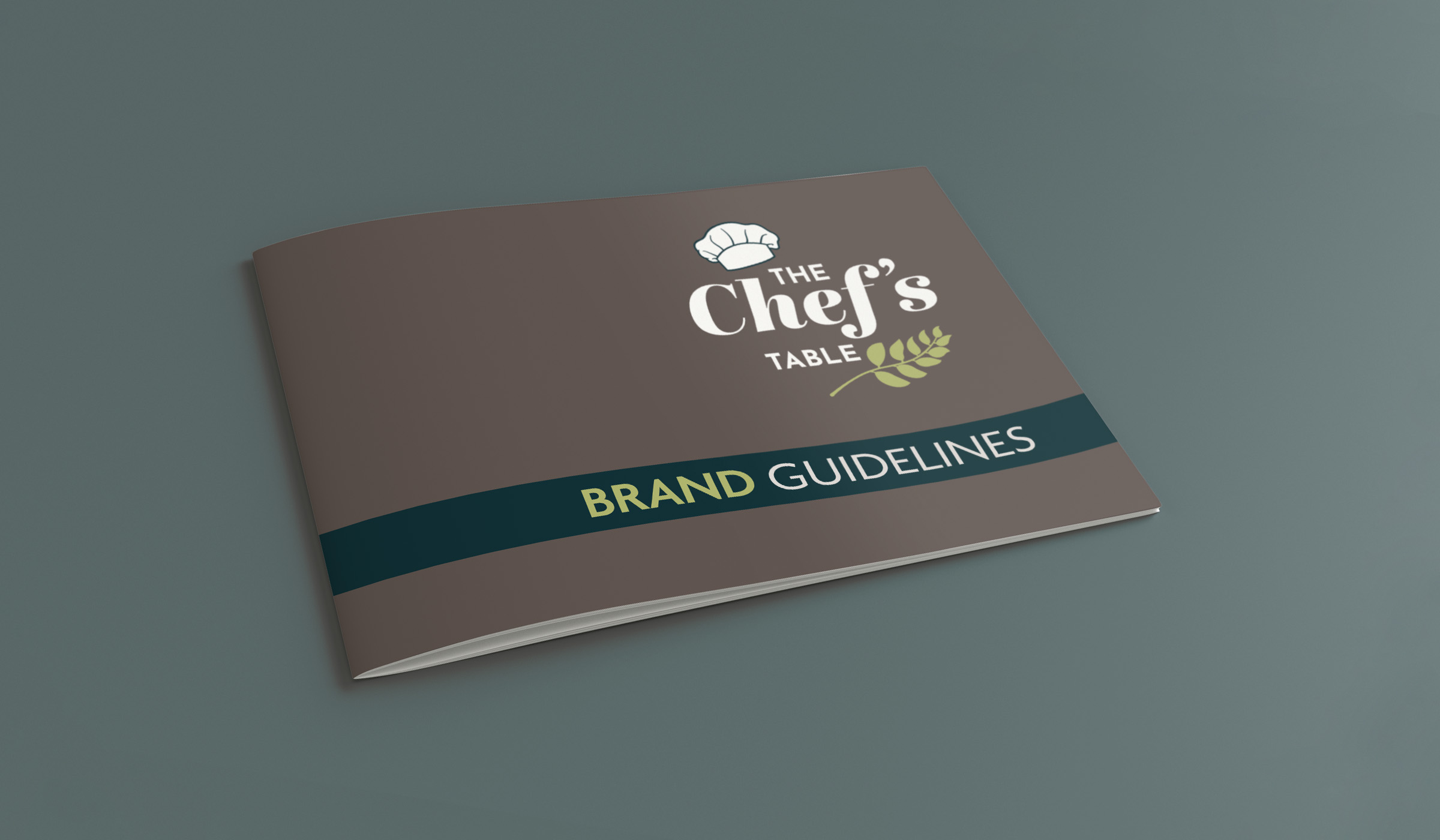
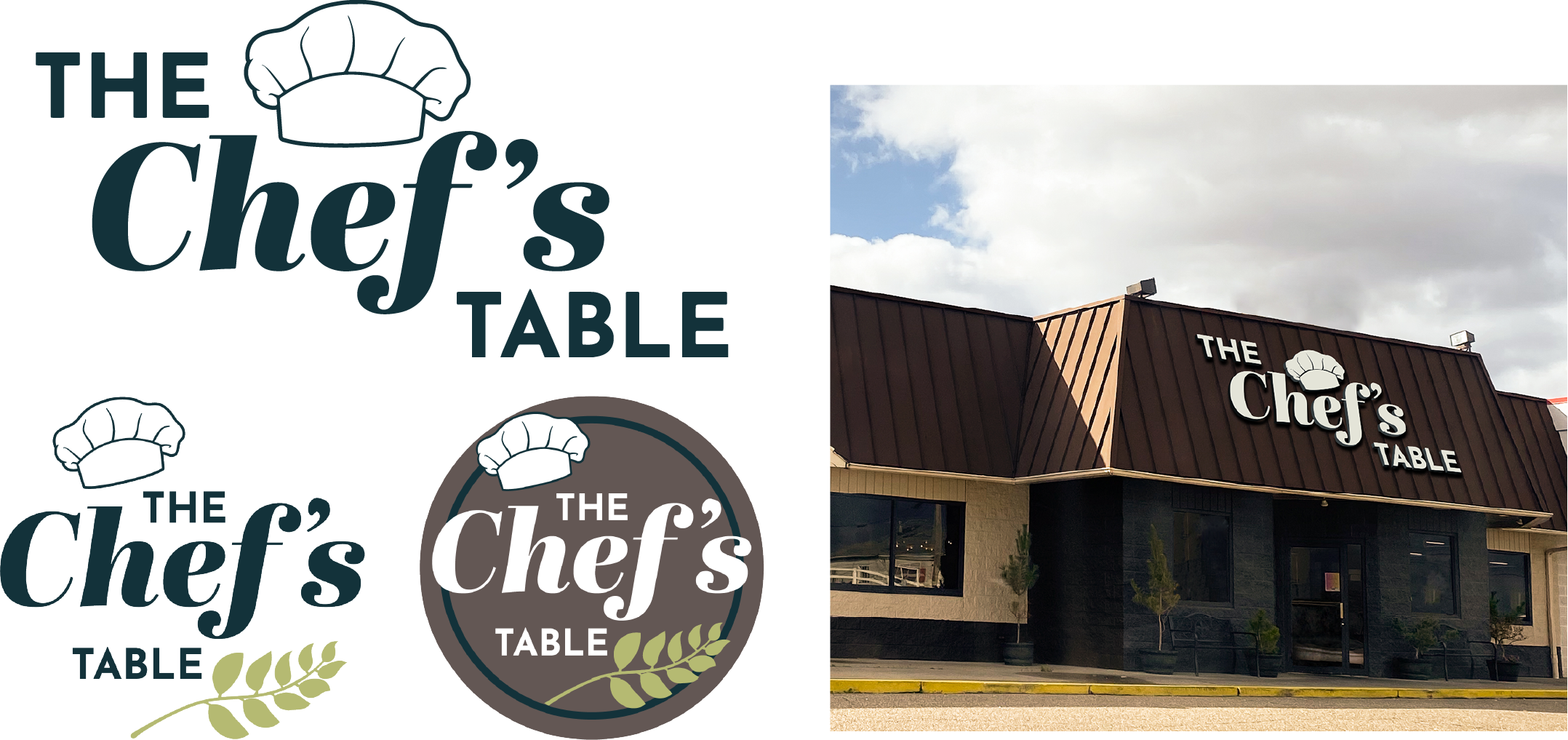
This seamless brand pattern is made of hand-drawn food and can be added as a fun element to packaging and designs.
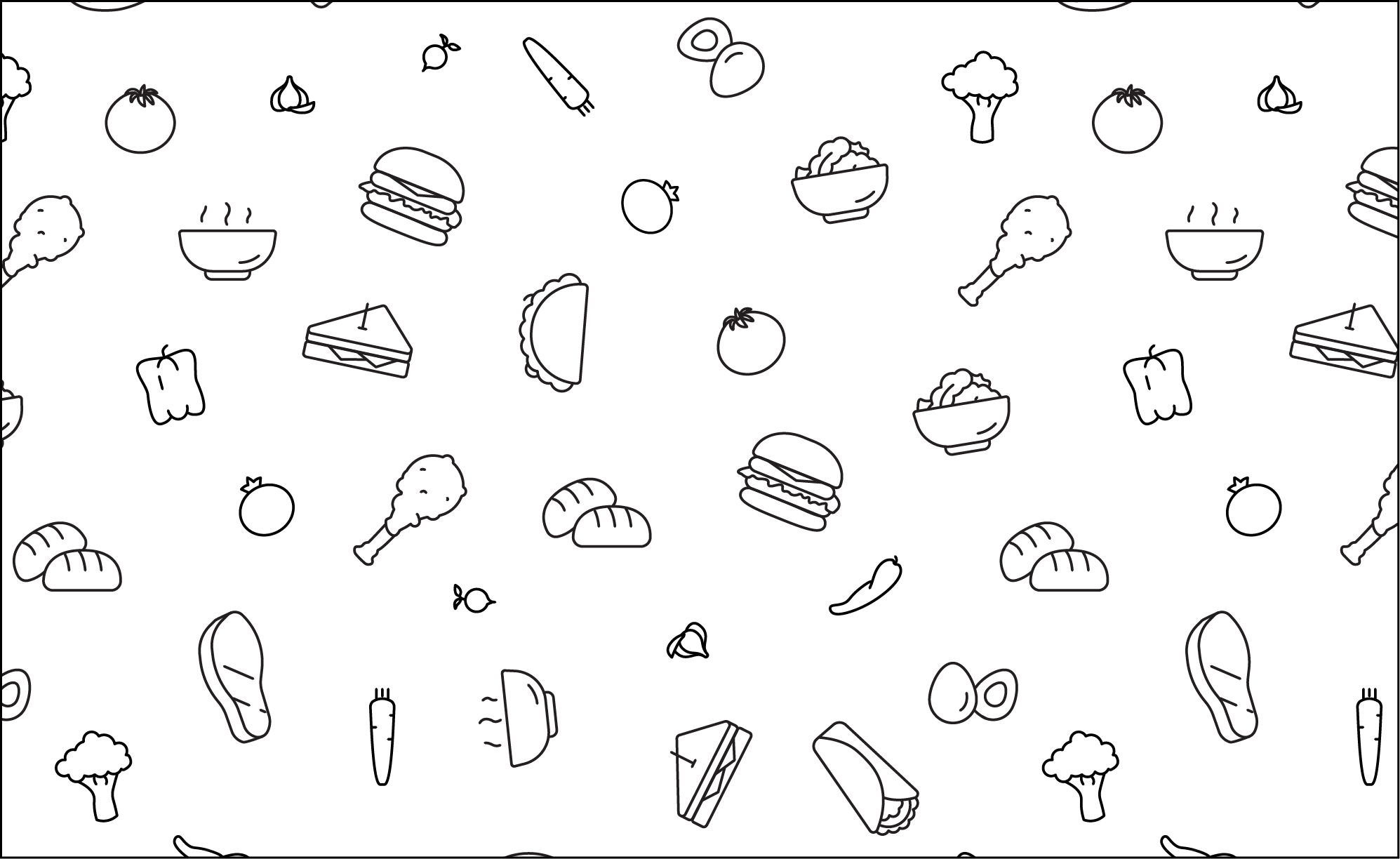
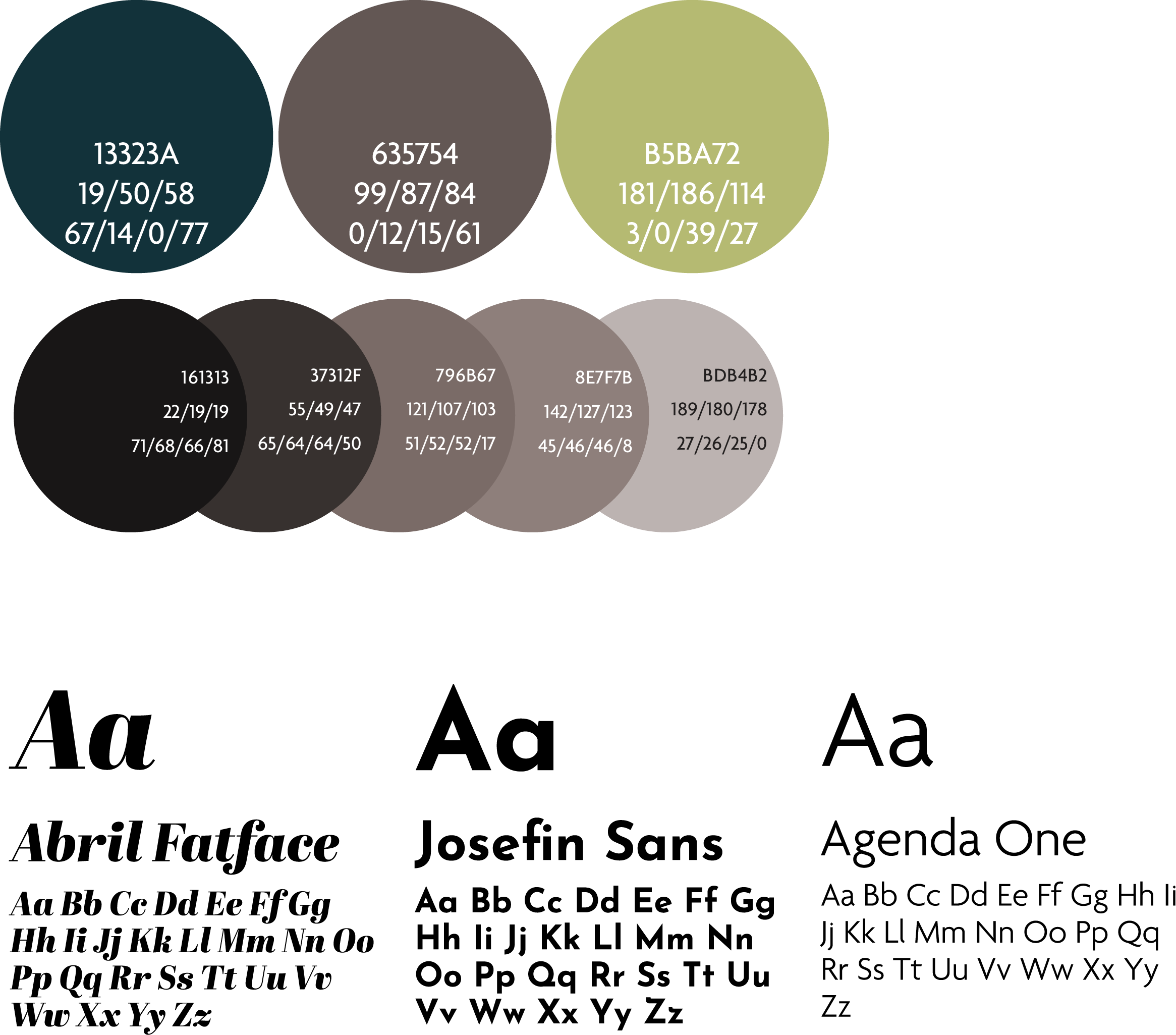
Problem 2: Social Media
The Chef’s Table struggles with it’s presentation on social media. The name on their accounts is still “The Chef’s Table on Wheels,” even though the food truck has been gone for over a year and they are now a brick and mortar restaurant.
Images are recycled frequently in posts, and many of the photos are pulled from the internet and are dishes that are not served at the restaurant. Sometimes the posts include religious messages and images that seem out of place for a restaurant and might be a deterrent to potential customers who do not share the poster’s faith.
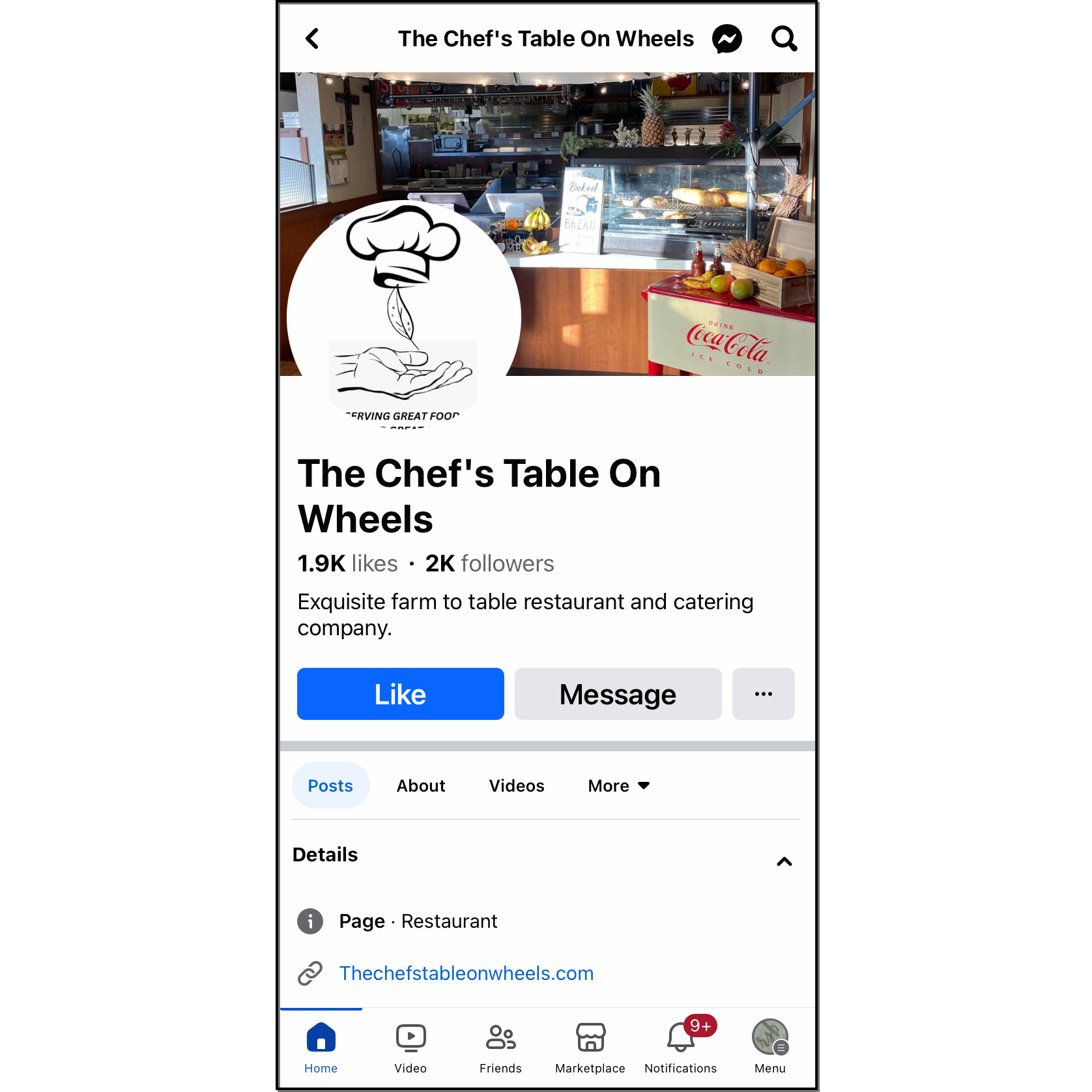
Solution 2: Create a Social Media Plan
Develop a social media plan focused on improving the content and quality of posts, general recommendations & best practices for customer engagement.
The social media plan will increase The Chef’s Table’s brand awareness and drive business. It will further improve the restaurant’s brand image and allow customers to build a deeper connection with the brand, increasing customer loyalty.
Problem 3: Menu
The problem with visual branding extends to the menu. The menu lacks visual appeal. It is in black sans serif font on a white background.
The layout lacks continuity, and the pages do not flow or have a sense of cohesion. None of the images contained in the menu appear actually to be food from the restaurant.
Overall, the menu looks crowded and the haphazard presentation makes it difficult for customers to make choices and it negatively impacts sales.
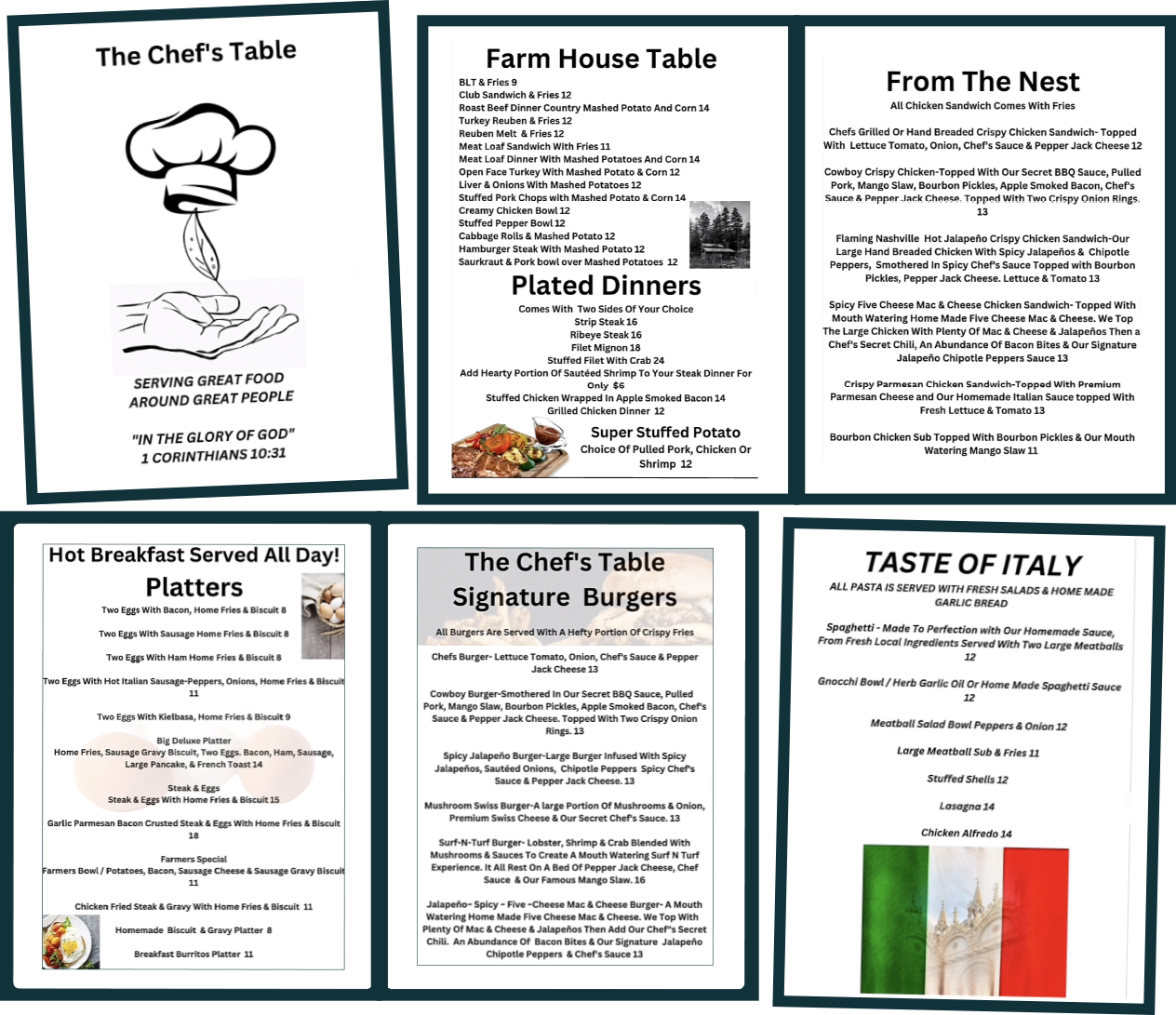
Solution 3: Design a New Menu
Use menu engineering principles to design a menu that aligns with branding and is organized, functional, and visually appealing.
A more easily navigatable menu is expected to cause a decrease in order time. The use of menu engineering on this redesigned branded menu is expeceted to to increase profits through guided decisions and upselling.

Conclusion:
The Chef’s Table has a history of food innovation and producing high-quality dishes in a welcoming atmosphere for a great price. Their business has evolved quickly with some significant changes in the past year, causing identity confusion. The plans laid out in this case study will help The Chef’s Table to solidify who they are, which will allow them to reorient, strengthen their position, and achieve new growth and success in the future.
Click below to read the full case study:

